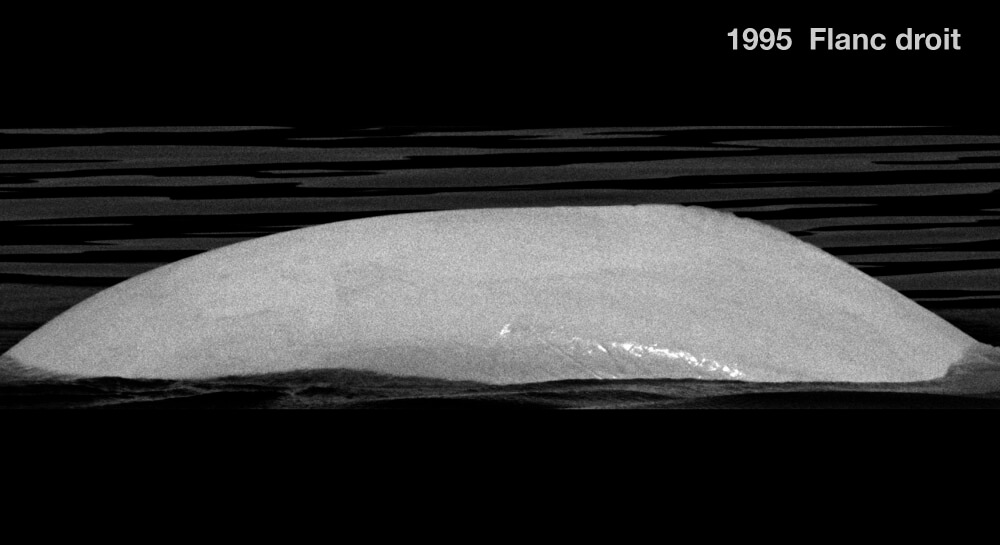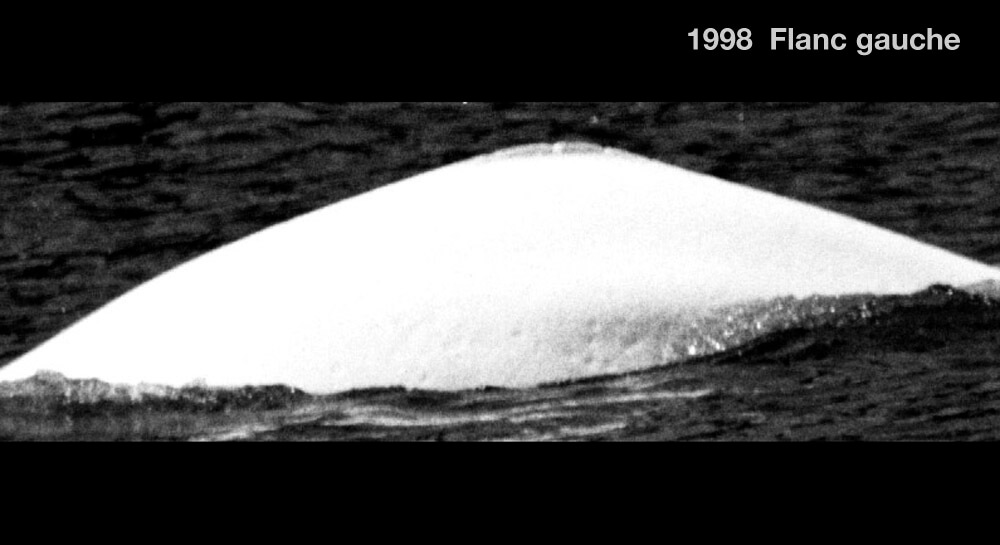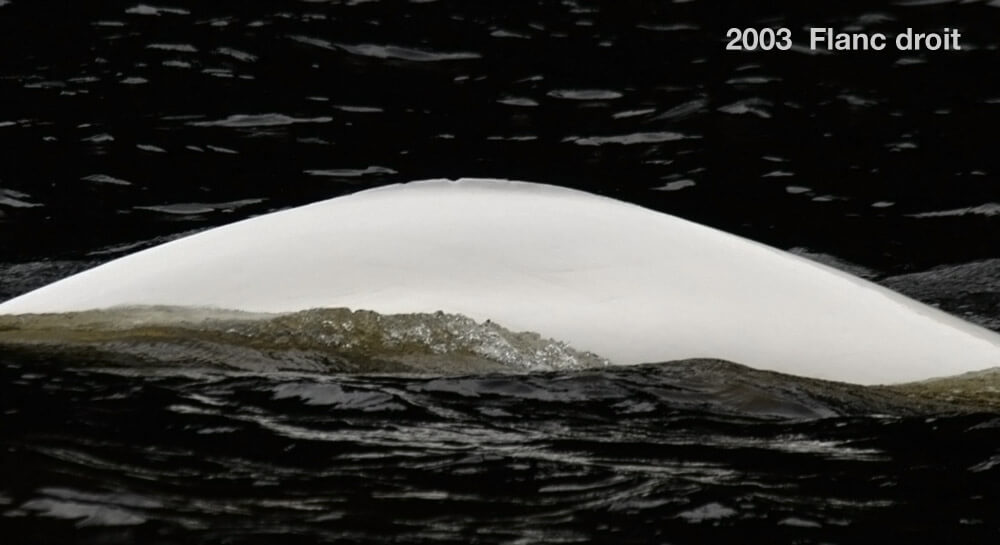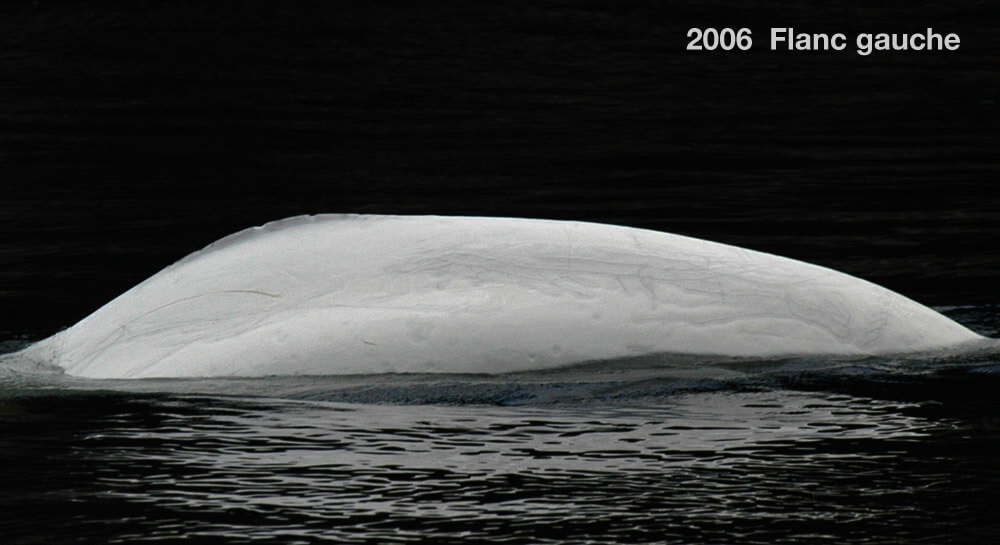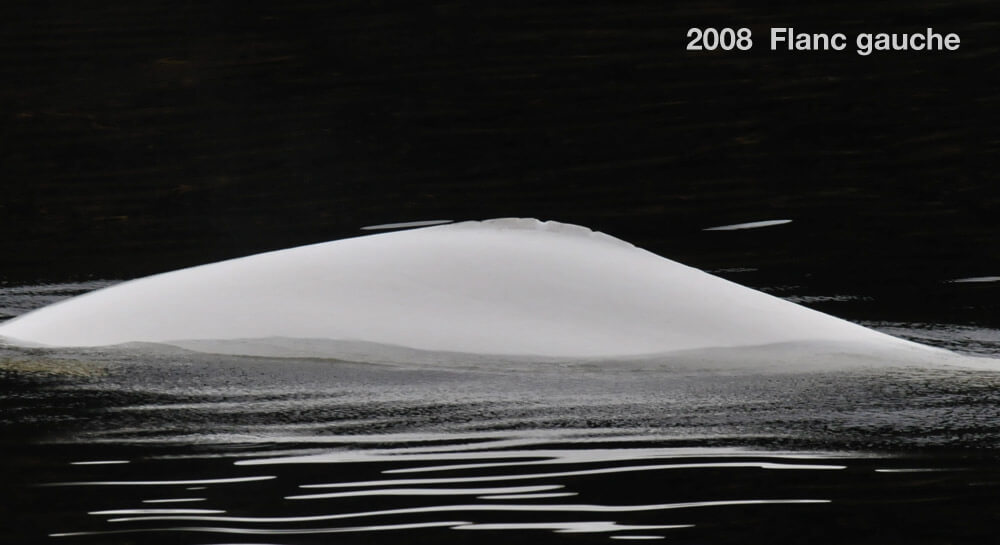Bélibec
Beluga

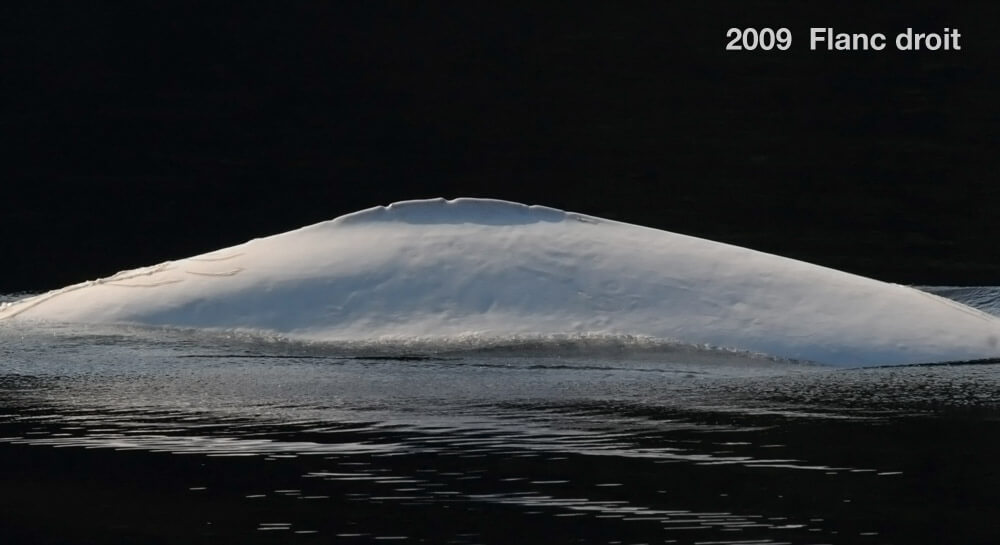
Adopted by Québec city
-
ID number
DL0829
-
Sex
Female
-
Year of birth
Around 1980
-
Known Since
1995
Distinctive traits
The even spacing between the similar notches in her dorsal crest make recognition of Bélibec easy, from the left or the right side.
Life history
Our first encounter with Bélibec dates back to 1995 in the Saguenay Fjord. At the time, she was slightly gray, almost white. Belugas fade from gray to white in colour between the ages of 12 and 16. Bélibec would therefore have been born around 1980.
Her size, habits and regular presence in herds comprising adults and young suggest that Bélibec is a female belonging to the Saguenay community. In summer, females form large communities in which they care for newborns and young. These communities are associated with traditional territories.
Bélibec has been seen regularly with DL0030. Associations between females of the same community are not stable, however. They may vary depending on the females’ reproductive status and whether or not they are pregnant or accompanied by a calf.
Bélibec is frequently accompanied by young, and more rarely by newborns. It is difficult to establish mother-calf relationships with certainty. Analysis of the DNA extracted from a biopsy sample taken from her back in 2013 will reveal the details of her family pedigree.
How Bélibec’s story unfolds will teach us volumes on the evolution of belugas’ social lives. By better understanding how belugas live, we will better be able to protect them.
Observations history in the Estuary
Years in which the animal was not observed Years in which the animal was observed
Latest news
The summer of 2016 – our 32nd season at sea with the belugas – was once again rich in encounters and surprises. Amongst other observations, we spotted Athéna at least eight times! This is good news, as she had not been identified the previous year!
April 1, 2016: we’re back in the Saguenay Fjord to continue the research project on communication between mothers and their newborns. At the end of the day, after a few hours of following the herd, we meet back up with the animals in Baie Sainte-Marguerite. Amongst the fifty or so individuals present is Bélibec. She is swimming in the company of Athéna in a herd comprising adults, young, and three newborns. The low winds and favourable weather allow us to use our drone. Such ideal conditions are rare and we’re thrilled when all the stars are aligned to allow us to collect high quality data! Indeed, this new technology allows us to obtain highly accurate estimates of group compositions and the age of the juveniles. The drone flies over the herd and focuses on the newborns. We observe several “bleuvets”, young individuals about one year old whose skin is grayish-blue in colour. Simultaneously, we “spy” on animals under water with our hydrophone to capture calls exchanged between mothers and young. Perhaps we recorded the Bélibec’s voice that day…
On July 29, 2016, we decided to explore the mouth of the Saguenay Fjord. We came across a large herd of around a hundred individuals. The herd is split into several small groups of adults. There aren’t many gray individuals in the herd, so it’s mostly adults, mainly males. However, among the individuals, we recognize Bélibec, a female from the Saguenay community. Because of the abundance of food, males and females often form large mixed herds at the mouth of the Saguenay Fjord.
The boat is just off Anse Saint-Étienne in the Saguenay, opposite a shore called the “cowboy hat” because of its peculiar shape. We observe Bélibec among a herd of some forty individuals, including adults and young, including 2 newborns. Along with Bélibec, we observe Yogi, another regular in the area.
The herd is separated into several groups. There is at least one group of males and several groups of females. It’s not easy to describe their behavior, as at one point the herd is directional, then all of a sudden the animals are “milling” (they dive and come back to the same spot several times). The Saguenay is a meeting zone between networks of male belugas and networks of females with young. Herds form here, ephemerally, often because of the abundance of food.
On September 4, 2013, in light rain and strong winds, we observe Belibec near anse Saint-Étienne in the Saguenay Fjord. She swims in the company of Miss Frontenac and DL0516 in a herd made up of adults, youngsters and two calves. The herd is divided into several small groups of three individuals, which are close together. After careful monitoring, we realize that there are not just two calves, but four in the herd!
Bélibec is recognized among forty or so individuals, young grays and white adults. The herd is very active, circling and vocalizing on the surface of the water. During this encounter, we also observe six newborns, each swimming alongside its mother. This is a very high concentration of newborns, and sightings like these are exceptional.
Sponsor
Québec city adopted Napou (1989), Bélibec (2014) and participates in the solidary adoptions of Neige, Nics, Solidaire, Bilou and Cica with other riverside municipalities of the St. Lawrence (2014).
Click on the name below to discover texts, drawings and videos composed by children of participating schools on Facebook.
Bélibec was named by the 3th grade class of the École Saint-Yves in Québec City as part of the Our Beluga’s Name is… contest.

